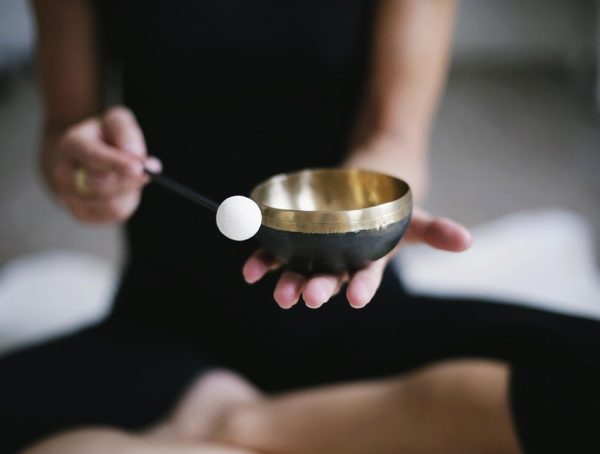Mindfulness vs. Transcendental: A Comparison of 7 Meditation Types
In today’s fast-paced world, the practice of meditation offers a sanctuary for people seeking to enhance their well-being, reduce stress, and attain a greater sense of self-awareness. Among the myriad of meditation styles available, two of the most popular are Mindfulness Meditation and Transcendental Meditation (TM). Both approaches share common goals of promoting inner peace and improving mental clarity but differ significantly in technique and philosophy. Let’s delve into these two practices and compare seven different meditation types, offering actionable steps for those looking to enrich their lives through meditation.
1. Mindfulness Meditation
Overview: Mindfulness meditation focuses on cultivating awareness of the present moment, promoting acceptance without judgment. Practitioners typically focus on their breath, bodily sensations, or thoughts.
Action Steps:
- Find a quiet space and sit comfortably.
- Close your eyes or lower your gaze.
- Spend a few minutes focusing on your breath. When your mind wanders, gently bring your attention back to your breath.
- Practice for 10-20 minutes daily.
2. Transcendental Meditation (TM)
Overview: TM is a mantra-based practice developed by Maharishi Mahesh Yogi. It involves silently repeating a specific mantra, allowing thoughts to settle into a deeper state of awareness.
Action Steps:
- Locate a certified TM instructor for guidance, as the mantras are personalized.
- Dedicate 20 minutes in the morning and evening for practice.
- Sit comfortably with your eyes closed and silently repeat your mantra.
- Allow thoughts to drift away as you focus on the sound of your mantra.
3. Zen Meditation (Zazen)
Overview: Zen Meditation, or Zazen, emphasizes seated meditation and mindful breathing. It often involves observing one’s thoughts and sensations without attachment.
Action Steps:
- Sit in a stable position (cross-legged or on a chair).
- Focus on your breath and allow your thoughts to arise and pass without engaging with them.
- Practice for 20–30 minutes, gradually increasing your sit time as you grow comfortable.
4. Vipassana Meditation
Overview: Vipassana, meaning ‘clear seeing,’ is one of the oldest meditation techniques from the Buddhist tradition. It engages practitioners deeply with their own thoughts, feelings, and physical sensations.
Action Steps:
- Participate in a 10-day Vipassana retreat for a rigorous and immersive experience.
- Practice daily meditation for at least an hour, observing sensations and thoughts without judgment.
5. Loving-Kindness Meditation (Metta)
Overview: Loving-Kindness meditation entails cultivating compassion and goodwill toward oneself and others, often using phrases or intentions to generate feelings of love.
Action Steps:
- Find a calm environment and sit comfortably.
- Start with developing self-love: Repeat phrases like, “May I be happy. May I be healthy.”
- Gradually extend these wishes to loved ones, acquaintances, and even individuals you have conflicts with.
- Aim for 10-15 minutes of practice.
6. Guided Visualization
Overview: Guided visualization combines relaxation and imagery, often led by a teacher or audio recording. It helps practitioners use their imagination to promote healing, achievement, or emotional release.
Action Steps:
- Choose a guided visualization audio or video.
- Find a comfortable place to sit or lie down.
- Close your eyes, listen, and visualize the scenarios as described.
- Dedicate 15-30 minutes to the practice.
7. Chakra Meditation
Overview: Chakra meditation focuses on the seven energy centers in the body, seeking to balance and harmonize them. This practice often incorporates visualization, mantra, and breath.
Action Steps:
- Research the seven chakras and their corresponding attributes.
- Sit comfortably and focus on each chakra, beginning from the root to the crown, using breathing techniques.
- Spend several minutes on each chakra, visualizing its color and energy.
Conclusion: Mindfulness vs. Transcendental Meditation
While both Mindfulness and Transcendental Meditation aim to create a lasting sense of peace within, they cater to different preferences and lifestyles. Mindfulness encourages a conscious engagement with the present moment, while Transcendental Meditation offers a structured technique focusing on the repetition of mantras. Probabilities are, one will resonate more with your unique mindset and life circumstances.
Choosing a meditation style is a personal journey, and trying different types can be immensely beneficial. As you explore these practices, remember that consistency and patience are key.
Don’t hesitate to experiment with various forms of meditation until you find one that feels right for you. The benefits are profound, ranging from reduced stress and anxiety to improved emotional resilience and overall well-being.
Final Quote:
“The mind is everything. What you think you become.” — Buddha
If you found value in this article, consider following Kevin on Instagram (@KSteineman) for more inspiring content on health, mindfulness, and personal development. Embrace the journey of self-discovery and wellness—each step you take brings you closer to your best self!
You might also like
More from Meditation
The Role of Mantras in Transcendental Meditation: A Deep Dive
The Role of Mantras in Transcendental Meditation: A Deep Dive Transcendental Meditation (TM) has garnered a significant following across the globe, …
The Science Behind Meditation: Improving Mental Health Naturally
The Science Behind Meditation: Improving Mental Health Naturally In today's fast-paced world, the pursuit of mental wellness has become paramount. Thousands …
Understanding the 7 Types of Meditation for Beginners
Understanding the 7 Types of Meditation for Beginners: A Path to Inner Peace Meditation has become a popular practice in recent …

































